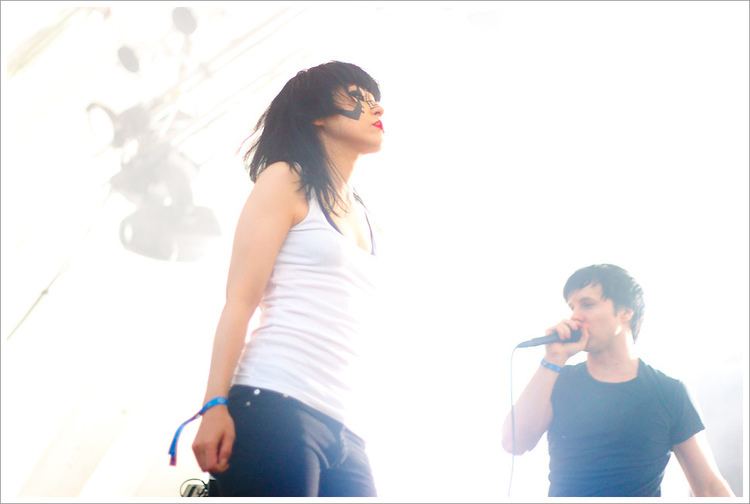Cultural origins Early 1990s, Germany | ||
 | ||
Stylistic origins Hardcore punkhardcore technonoise rockdrum and bassbreakcoreindustrial rock Typical instruments Electric guitarbassdrum machinedrumskeyboardsynthesizersamplersequencergroovebox | ||
Digital hardcore is a music genre that melds hardcore punk with electronic music such as hardcore techno, industrial, breakcore and drum and bass. The style was developed in Germany during the early 1990s, and often has sociological or far-left lyrical themes.
Contents
Characteristics
Digital hardcore music is typically fast and abrasive; combining the speed, heaviness and attitude of hardcore punk, thrash metal, and partly of riot grrrl with electronic music such as hardcore techno, jungle, drum and bass, glitch, and industrial rock. Some bands, like Atari Teenage Riot, incorporate elements of hip-hop music, such as freestyle rap.
The electric guitar (either real or sampled and usually heavily distorted) is used alongside samplers, synthesizers and drum machines. While the use of electronic instruments is a must, bass guitars, electric guitars, and drum kits are optional. Vocals are more often shouted than sung by more than one member of the group. Typically, the lyrics are highly politicized and espouse left-wing or anarchist ideals.
1990s
The music was first defined by the band Atari Teenage Riot, who formed in Berlin, Germany in 1992. The band's frontman, Alec Empire, coined the term "digital hardcore", setting up the independent record label Digital Hardcore Recordings in 1994. German bands with a similar style began signing to the label and its underground popularity grew, with small digital hardcore festivals being held in several German cities. By the mid-1990s, a number of new record labels specializing in the genre were formed around the world. These included Gangster Toons Industries (Paris), Praxis (London), Cross Fade Enter Tainment (Hamburg), Drop Bass Network (U.S.), and Bloody Fist (Australia). DHR also had some kinship with the Frankfurt labels Mille Plateaux and Riot Beats. Alec Empire's work subsequently set the template for breakcore.
Other prominent digital hardcore musicians of this period include Christoph De Babalon, Cobra Killer, Sonic Subjunkies, EC8OR, Hanin Elias, Lolita Storm, Nic Endo, The Panacea, and The Mad Capsule Markets.
2000s
In Alec Empire's words, "Digital Hardcore went from a local, Berlin based scene to an international underground movement." The soundtrack to the film Threat included contributions from digital hardcore musicians, along with metalcore bands. James Plotkin, Dave Witte and Speedranch's project Phantomsmasher combined digital hardcore with grindcore. 21st century digital hardcore groups include Ambassador 21, Left Spine Down, Motormark, Phallus Über Alles, DJ JMS, F-NOISE, Schizoid, noCore, Kitcaliber, The Shizit, JuL!e D:sTrOy, Rabbit Junk, Psychea, Matt Ellin, Fear, and Loathing in Las Vegas, and Moshpit.
